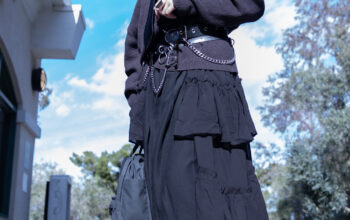Village Room 8209 was filled to capacity. Canvases laid across desks as students’
painted reds, yellows and blues across them, taking silent cues from the woman at the front of the class along with verbal cues from one of the interpreters in the room.
Nancy Rourke, a Deaf artist from Colorado, came to share her experiences and spread the word of the Deaf culture movement known as De’VIA. (Deaf View/Image Art)
“De’VIA is not just Deaf artists,”
Rourke signed, “it’s about expressing Deaf experience, using a variety of, but constant motifs that represent culture and language and identity.”
The De’VIA movement began in 1989 between nine Deaf artists and is now in what Rourke calls the second wave.
“The art from 1989 in that era is really only shown in museums and galleries,” Rourke signed, “this time, we wanted to show it on social media, on Facebook and Twitter, so it was more accessible and could spread further.”
ASL instructor Kristine Hall invited Rourke to speak to the students and share her experiences.
“You have black artists, gay and lesbian artists, women artists, they all have their own movement and it’s usually about equal rights,” Hall signed, “that’s who we are too, we want equal rights.”
Co-president of the ASL Club Ben Arden is not deaf, but says he began signing when he made a friend back home. He moved to Los Angeles and continued signing when he joined the ASL program at Pierce College.
“As far as the program, it’s changed my life to be honest,” Arden said. “It’s the second largest interpreting program in southern California and it is full of amazing people. Professors, students, everybody.”

